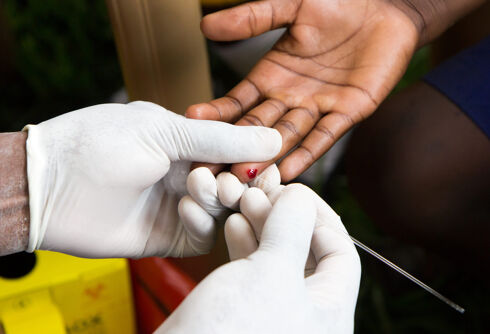More than 20 percent of Gen Z, those born between 1997 and 2012, identified as LGBTQ+ in 2021, according to one study. New results have found that 26% identify as “something other than straight.”
The group is by far the most likely to consider themselves sexually fluid when compared to millennials (15%), Gen X (11%), or boomers (7%).
Related:
And the results show that the group is much more likely to reject terms like “gay” or “lesbian” in favor of “queer,” “bisexual,” or “pansexual.”
Never Miss a Beat
Subscribe to our newsletter to stay ahead of the latest LGBTQ+ political news and insights.
LGBTQ+ representation has skyrocketed over the past two decades and an increase in the number of people who identify as part of the community has also steadily risen. While bisexuals have always been the largest part of the group, more and more are willing to accept and identify with the term in a move that discards the notion that attraction has to be evenly split between men and women.
The Kinsey scale, published in the 1940s, found that sexuality existed on a spectrum between straight and gay for both genders, with most people falling somewhere in the middle to varying degrees. But while most Americans only saw the binary endings and simplified the scale into a singular middle-ground, Gen Z is embracing the shades that exist in between.
“It’s not a totally new idea, but we’ve seen this generation show more willingness to say, ‘Hey, sexuality is not this rigid, binary thing,'” psychology professor Phillip Hammack, the director of the Sexual and Gender Diversity Laboratory at the University of California, Santa Cruz, told Business Insider.
13% of Gen Z identifies as bisexual, while only 7% of millennials and 4% of Gen X self-identify with the label. Only 1% of boomers use the term.
Reclaiming the term, 5% of Gen Z identifies as queer according to the study, compared with 1% of millennials and Gen X who still resist the term that was used as a slur for years. Less than 1% of boomers self-identify with the term.
“We don’t really know from a social-science perspective if there really are more bisexual people, for example, in today’s generation,” Hammack pointed out. “It could be that more people, in general, are more comfortable being out and open. I suspect actually the latter.”
“Particularly among members of Generation Z, there’s this opening up of queerness,” he added. “It’s inclusive of basically anyone who is challenging cisgender, heterosexual, or heteronormative thinking.”
Don't forget to share:
















